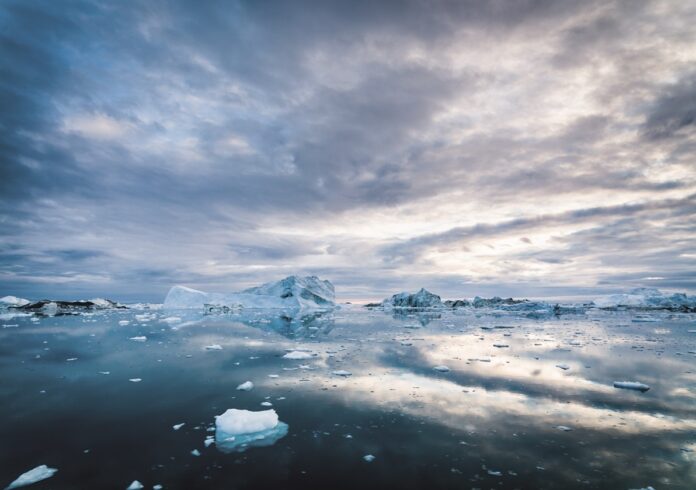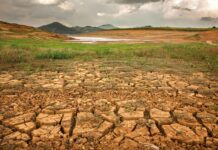By Erika Yarrow-Soden
The UN’s technical brief Surging seas in a warming world: The latest science on present-day impacts and future projections of sea-level rise provides a summary of the latest science on sea-level rise (SLR), highlighting its current impact and outlining potential future scenarios at global and regional levels, with a focus on major coastal cities in the Group of Twenty (G20) countries and on the Pacific Small Island Developing States.
SLR is a subject of research that in recent years has raised alarm bells increasingly. In 2021, the Sixth Assessment Report (AR6) of the Intergovernmental Panel on Climate Change (IPCC) concluded that global-mean sea-level is rising at rates unprecedented in the past 3000 years because of human-induced global warming. Since then, research on climate ‘tipping points’ and ice-sheet dynamics has led scientists to warn that future SLR is likely to be accelerated and more dramatic than previously predicted.
Sea-level rise is with us now
This UN technical brief finds that SLR is affecting the lives and livelihoods of coastal communities and low-lying island nations around the world today, and is escalating. Published in the lead-up to the 2024 UN Climate Change Conference, taking place on 11-22 November in Baku, Azerbaijan, the briefing sets out in no uncertain terms that the climate actions and decisions taken by political leaders and policymakers in the coming months and years will determine how devastating the impact of SLR will be and how quickly it will intensify.
Speaking at the launch of the publication, United Nations Secretary-General António Guterres asserted: “Rising seas are a crisis entirely of humanity’s making. The world must act and answer the SOS before it is too late.”
Science paints an alarming picture
This warning is backed up with growing evidence. In addition to the findings of the IPCC’s AR6 report, the World Meteorological Organization (WMO) has reported that the rate of SLR in the past 10 years has more than doubled since the first decade of satellite records, increasing from 0.21cm per year in the period 1993–2002 to 0.48cm per year in the period 2014–2023.
“Rising seas are a crisis entirely of humanity’s making”
This acceleration in SLR is primarily because of increasing rates of ice loss from the Greenland and Antarctic ice sheets, which are losing ice mass at average rates of around 270 and 150 billion tonnes per year respectively, with the seven worst years of ice loss on record all occurring in the past decade. At the same time, the ocean has absorbed more than 90% of the excess heat that has accumulated in the Earth’s system since 1971 because of rising greenhouse gas (GHG) emissions. As this heat is absorbed, ocean temperatures increase and water expands, exacerbating SLR.
Ocean-warming has increased, particularly in the past two decades. According to WMO’s State of Global Climate Report 2023, sea-surface temperatures and ocean heat have reached their highest levels in observational records. It reports that it is likely that the upper 2000 metres of the ocean will continue to warm because of excess heat that has accumulated as a result of global warming – a direction of travel that may be irreversible on centennial to millennial timescales.
Between 2006 and 2018, melting land-ice contributed to around 45% of the observed change in global-mean sea-level, while seawater expansion contributed 39%. The technical briefing warns that even with net-zero emissions reached, SLR will continue because of committed ocean warming and land-ice melt caused by past emissions.
Recent studies suggest that long-term warming of 2°C could lead to the eventual loss of nearly all of Greenland, much of West Antarctica, and even vulnerable portions of East Antarctica, triggering “inexorable SLR” and committing the planet to 12–20m of SLR over millennia. Warming of 3°C could further speed up this loss to within the next few centuries, resulting in extensive coastal loss and damage, and the loss of livelihoods and assets for many coastal communities around the world.
Researchers warn that accelerated SLR has the potential to redefine the coastlines of the 21st century, risking the safety, security and sustainability of many low-lying islands, populous coastal megacities, large tropical agricultural deltas, and Arctic communities.
Coastal megacities at risk
While much of the concern regarding SLR has focused on its impact on low-elevation coastal zones, which comprise continental and island areas connected to the sea no more than 10m above mean sea-level, this briefing states that ‘relative’ SLR also threatens dozens of coastal megacities across the globe, including Bangkok, Buenos Aires, Dhaka, Guangzhou, Jakarta, Lagos, London, Los Angeles, Miami, Mumbai, New Orleans, New York City, Rio de Janeiro, Shanghai, and Tokyo.
The authors of the technical briefing warn policymakers and water management professionals that climate-driven coastal hazards and risks come not only from SLR, but also from its amplification of storm surges, tides and waves. Coastal-flood hazards and associated risks are also expected to increase as a result of local land sinking (subsidence) because of human activities such as the building of dams or groundwater and fossil fuel extraction, with their combined effects leading to infrastructure damage because of coastal flooding, saltwater intrusion into groundwater and rivers, shoreline retreat, and change to or loss of coastal ecosystems and economic sectors. The briefing states that such impacts are already creating, or are likely to create, risks to livelihoods, settlements, health and wellbeing, and food and water security.
Recommendations
To avoid the worst impacts of SLR, the briefing calls for urgent cuts in global GHG to stay within a 1.5°C long-term warming trajectory, investment in effective coastal adaptation and resilience, and improved warming systems to protect vulnerable communities.








